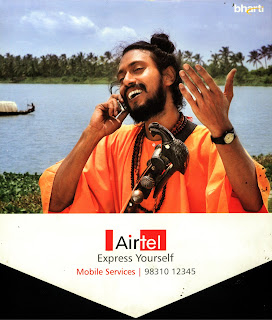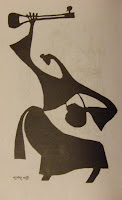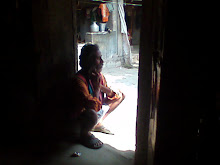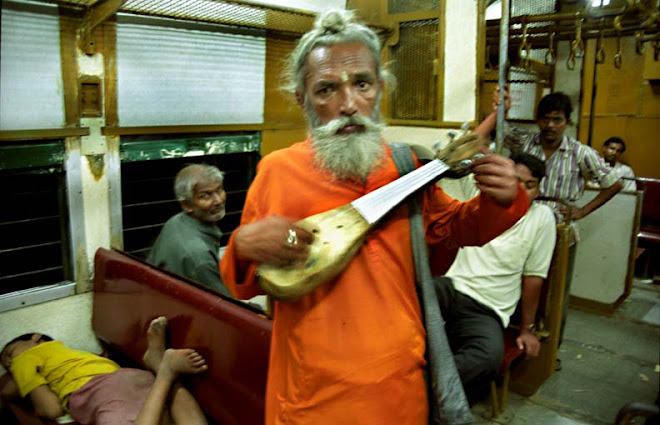Saturday, May 3, 2008
Thursday, May 1, 2008
Baul selling Cellphone
Baul and the ever-compatible Tagore
The urban literati is interested only in baul songs; what's more, the bhadralok perception of baul till date has remained largely romantic - its all about transcendence, nostalgia, mysticism and, the exotic. Lina Chaki writes in Bauler Charandasi:"Baul means an ektara poking the sky and singing in a ‘Rabindrik style’. Baul means mysterious
speech. Baul means
a-social behaviour. Again, Baul means secret ways of sadhana, symbolic words,
songs. These ideas have enveloped the Baul in a colourful mysterious mist for us…. Baul song is an object of
research." [1]
Note the phrase Rabindrik, meaning something linked to the great Rabindranath Tagore and his school (not of thought, but the real school at Santiniketan). It may connote an attitudinal-behavioural way of certain social beings! Anyway, the good thing about this citation is it successfully includes most of the trends and currents in the field and tries to relate that to the 'Great' tradition of Baul scholarship.
[1]translated from Leena Chaki, ‘Bauler Charandasi’, in Banglar Baul Fakir, Calcutta: Pustak Bipani, 1999, p. 85.
How far was Tagore's influence?
Here is what Sasibhusan Dasgupta, who was an expert on Vaisnavism, Buddhism and Tantra, says:"We, for the past few decades, have been influenced by
the ideas propagated by the poet Tagore
in his poems and writings, and also by the writings and speeches of his close
associate, Pandit Ksitimohan Sen; for them Baul represents more a spirit of
unconventional approach to divinity through unassumed love and piety than any
precise religious cult."
Wednesday, April 30, 2008
Rabindranath Tagore on Bauls
"One day I chanced to hear a song from a beggar belonging to the Baul sect of Bengal…What struck me in this simple song was a religious expression that was neither grossly concrete, full of crude details, nor metaphysical in its rarefied transcendentalism… "
Rabindranath Tagore, ‘The Man of My Heart’, Religion of Man, Hibbert Lectures for 1930.
Jogendranath Bhattacharya - an orthodox attack
Pandit Jogendranath Bhattarcharya, vehemently supporting high Brahminism, wrote, back in 1896:"The Bauls are spoken of as vaishnavas; but properly speaking they are a godless sect… Aristocratic Brahminism can only punish them by keeping them excluded from the pale of humanity… if the Chaitanite Gossains, Christian Missionaries or Mahomedan Mullas could reclaim these they would be entitled to
the everlasting gratitude of mankind."
Who are the Bauls? Part II
"As will become clear, authorities on Bāuls agree on very little, and several contradictory images persist. While the passage cited accurately reflects the perceptions of some Bengalis, virtually all Dimock’s assertions would be contradicted by one or other specialist in this topic. Indeed one of the arguments of the present volume is that this lone male minstrel with ‘only the wind as his home’ is a relative newcomer in the history of ‘Bāuls.’ "
Who are the Bauls? Part I
"Who then are the Bauls? The word itself means ‘mad’. When Bengalis use the term, they usually mean to indicate a type of mendicant religious singer who, dressed in tattered clothes deliberately made up of the garments of both Hindus and Muslims, wanders from village to village celebrating God in ecstatic songs, existing on whatever his listeners choose to give him. Although today he is possibly a householder… traditionally he has‘only the wind as his home’. His hair is long and beard matted, and as he sings he accompanies himself on a one stringed instrument…"





